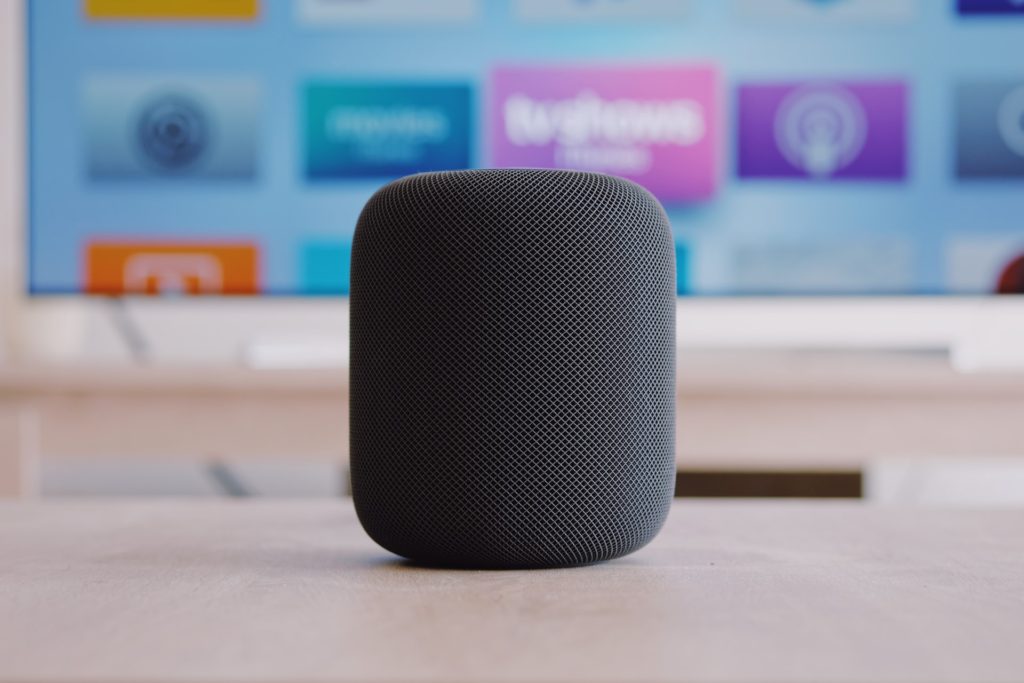Constantly learning and incorporating the latest marketing trends is the only way to stay relevant in the eyes of a global audience. The Covid-19 pandemic has undoubtedly been a game-changer for content marketing.
Ever since the outbreak, it has been common for content marketing strategies to experience steadfast changes to adapt to consumers.
The industry has put aside an approach based on fulfilling financial objectives to focus more on the customer experience through valuable content.
Brands are beginning to reflect on their societal role and responsibility to customers. They have understood that content marketing is essential for attracting and retaining their audience. Of course, creativity will be necessary to achieve notoriety and scale up, even with limited budgets.
Here are some of the key trends to keep in mind for your 2023 content strategy.
Visual content marketing
Visuals in content marketing will keep having a significant impact beyond 2023. Now that decreasing attention has become the norm and the amount of content generated is growing, marketers need images to tell provocative and memorable stories. Instagram carousels, for instance, are something elementary but, in many cases, not done correctly.
Although tools such as Stories or IG TV are lovely, carousels on Instagram are ideal for presenting lists and tips that can become valuable assets to convert audiences.
New trends have influenced how marketers design social media images and develop infographic ideas. Understanding what attracts users’ attention will make creating engaging and relevant visual content for audiences easier.
Video content keeps growing.

Although the obsession with it is in the past, video will continue to be one of the most valuable tools to generate brand content. Long videos, in particular, present opportunities that written or graphic content cannot. Videos should continue to be a fundamental part of your strategy.
There are numerous options thanks to platforms like YouTube, Facebook, Instagram, Linkedin, or Tik Tok. It’s essential to use various video formats that suit your brand, industry, and niche and optimize them for every part of the customer journey.
For example, how-to videos and product guides benefit clients looking to educate themselves. On the other hand, ready-to-buy customers should watch videos comparing different product options with direct links to product pages.
TikTok

With around 850 million active users, TikTok stands out among the content marketing trends for 2023. Companies’ challenge with this social network is to make the audience feel part of something bigger. The brand’s tone of voice should reflect values, beliefs, audience, and culture.
TikTok is widely used by centennials, which allows brands to reach this audience appropriately. Your message should be youthful and light-hearted. The best brand voices sound and feel like a person, not as a corporation or a mission statement.
Why you should be in TikTok:
First of all, it’s new and not yet saturated. On other social media platforms, many other companies and influencers compete for users’ attention. TikTok is still relatively new and is growing, so the time is now to establish yourself in your niche.
Unlike Instagram, TikTok content is spontaneous and unpolished. The latter reduces production costs and attracts younger audiences reluctant to more traditional marketing styles. Furthermore, any content you create on TikTok can be shared directly from the application on different platforms. You can drive traffic to Instagram and YouTube directly from your TikTok profile. You can also download your content in video or GIF format.
Tips for using TikTok in your company
1. Create fun content
TikTok is less polished and more spontaneous. Even serious businesses will introduce lighter and more fun content to TikTok. At the same time, they sustain a professional brand image on other social media platforms. It’s a free pass to be silly and just yourself.
2. Get influencers to promote your products.
This is a strategy that works on other platforms as well. Find a company or influencer with a large following in your niche and join forces to create content.
3. Come up with a hashtag challenge.
Hashtag challenges compel users to create videos within a particular topic and to add their hashtags to it. You could even offer prizes to incentivize potential customers to join, too.
Real-time content is another 2023 content marketing trend, just like Livestream Shopping. Live video has been rapidly becoming popular recently, which has solved the problem with the high cost of audiovisual production. They are easier to produce and provide a more personal touch, something especially valued today. Furthermore, marketers have seen metrics increase in social media with live video, so it’s a trend to watch.
Live content
Brands don’t need the best video equipment to create live content – a mobile phone camera in selfie mode is enough to keep your audience entertained. Live video is more engaging, interactive, and profitable than produced video content. But it’s not just about the profitability of live content. Live content also has the advantage of humanizing a brand by putting real people in front of the camera.
People are no longer interested in seeing boring presentations of more than 15 slides; they seek direct contact. A live broadcast will be more feasible to increase consumers’ engagement, especially since they can ask questions instantly to clarify any doubts about the product or service. At the same time, conversion rates will rise because if customers are excited about what the hosts discuss, they will be more likely to buy on the spot.
Of course, live content needs to be planned – you don’t want to be boring or make mistakes when speaking or demonstrating a product. Like in TikTok, companies must consider partnering with influencers. They usually attract more followers and generate engaging, interactive content that captures customer attention. Once the content is ready, we recommend establishing a schedule, like a sitcom or live TV show. Consequently, customers will look forward to the latest broadcast with the latest news.
Customize content for the client.

Personalization isn’t new, but that doesn’t make it any less relevant to the future of digital marketing. Do you want to create compelling sales emails, educate your audience, generate recurring sales on your page, or achieve any other goal in the digital realm? In that case, you need to personalize your content.
However, personalization in 2023 goes beyond simply addressing the customer by name in emails or when talking to them via chat. In the coming years, technologies such as artificial intelligence will make data analysis more efficient. Thus, personalization is bound to be more and more effective.
AI solutions can help you choose the perfect email template for each individual, create content to suit their exact needs, and make better content decisions for the future. With that in mind, consider integrating AI to take content personalization to the next level.
You could, for instance, show an optimized version of your site based on each user’s browsing history and past activity. It will surely make a difference and skyrocket customer experience. Another great tactic is content localization, which works when content is not applicable outside certain countries.
Chatbots and AI
And since we’re talking about the matter, you should know chatbots and AI are set to change how we create and deliver content. They have become inextricable parts of the user experience and how we communicate with the global audience.
Additionally, artificial intelligence will continue to evolve and help content creators create better-quality pieces. At the very least, AI-powered software can streamline content creation by providing relevant data, obtaining information references, and providing authority to everything marketers write. It is also interesting to remember that chatbots are getting smarter every day. We will use them to provide information and support marketing campaigns more fluidly.
Augmented reality to contextualize marketing

Augmented reality has gone from a marketing “gimmick” in its early days to a powerful Inbound Marketing tool for today’s leading global brands. Mobile apps are more popular than ever, and people consume more smartphone content. Why not combine the two to create a more profound interactive experience?
You can merge content marketing and augmented reality to guide people to your store. You can also create a more engaging experience on your website and increase the success of your e-commerce. Especially now that augmented reality enables customers to test products digitally! In essence, augmented reality can provide much-needed context to your brand content and messaging, enhancing the customer experience. Be sure to start using it to improve your marketing during 2023.
Voice searches

Another major trend to prepare for is voice search. Yes, we already know that voice search has been growing since 2018, but in 2023 and beyond, it will become massive. Right now, more than a quarter of the world’s population is using voice search on mobile phones, according to a recent report by Microsoft.
People are expected to start using voice search predominantly, and text searches could eventually become obsolete. It won’t happen next week or the following year, but it’s essential to know that voice search is gaining momentum.
“The explosion of smart speakers inside homes has led to more and more voice searches.”
The explosion of smart speakers inside homes has led to more and more voice searches. By the end of 2020, there were 4 billion people worldwide using voice search, and by 2025, that figure will increase to 6.4 billion.
With this in mind, one of the pillars of your content strategy for 2023 should be to start adjusting your content for voice search. Instead of integrating keywords like “best paella recipe,” try to include more conversational queries in your content, like “how to make the best paella” or “what is the best paella recipe.”
Audio

Audio is going through the moment that video went through a few years ago. Between 2010 and 2020, a video was the way forward for content creators of all categories. The latter, by the way, was unfeasible due to production costs and not always expected return. Now, the same is said of audio.
The boom of podcasts: more and more platforms and content creators are generating audio content. For brands, it is also a frequent terrain that brands shouldn’t overlook.
Content communities

2020 meant a considerable change at the social level that has resulted in much more personalized marketing strategies. These strategies focus more on the individual and not as part of an “objective audience.” This “new reality” has also led to the growth of communication and participation platforms such as Slack, which offer new opportunities. These platforms provide a space to create a community with which brands can communicate directly. The latter is not usually possible in Facebook or LinkedIn groups.
These communities allow digital marketing teams to optimize their processes, even from a distance. They can communicate ideas and give feedback on what is more effective. Thus, communication platforms are also excellent tools for teams of content creators since it is easier than ever to manage a remote work team.
Brand Transparency
The pandemic caused by the coronavirus took the entire world by surprise. During and after 2023, content marketing strategies must consider empathy and community service as relevant topics. Millennials appreciate when brands give something back to the environment or charitable causes. The most successful brands have been on the front line, helping people through these difficult times. Still, consumers are increasingly cautious that brands may use these tactics to show off.
Today’s audiences demand organizations that understand their realities and offer them value without expecting anything in return. That’s why a customer-centric approach (not product-centric) is becoming more relevant. Many companies began to show that they had their customers’ back during the crisis. In the future, brands must be more transparent about their content creation efforts. You must rethink your branding purposes to fit the “new normal.” It is also vital that they meet the expectations of a society facing one of the most significant health crises in recent times.
Keys to humanize your brand
Know and learn from your audience.
Knowing your audience goes way beyond gathering demographic data. Learning from their behavior, fears, dreams, and personalities is about learning. One way to do this is through content on your blog or other platforms such as social networks or podcasts. Content allows the audience to interact with the brand, primarily if it works with Call to Action. Through interactions on social networks, you can find out what users think, whether they like what you post or what they expect from the brand. You can also ask them what you want to know through Instagram or email surveys.
Tell your own story
Remember, you are the best storyteller for your brand. For years, agencies were allowed to speak for brands. Branded content through the media was thought to be the most consistent path. Now we know the best strategy is to have your unique voice to communicate with your audience.
Adapting to the new reality is essential for brands to grow in 2023. The COVID-19 pandemic highlighted the need for brands to work in a genuine connection with their audience. Moreover, it has revealed the importance of being clearer about your business purpose.















